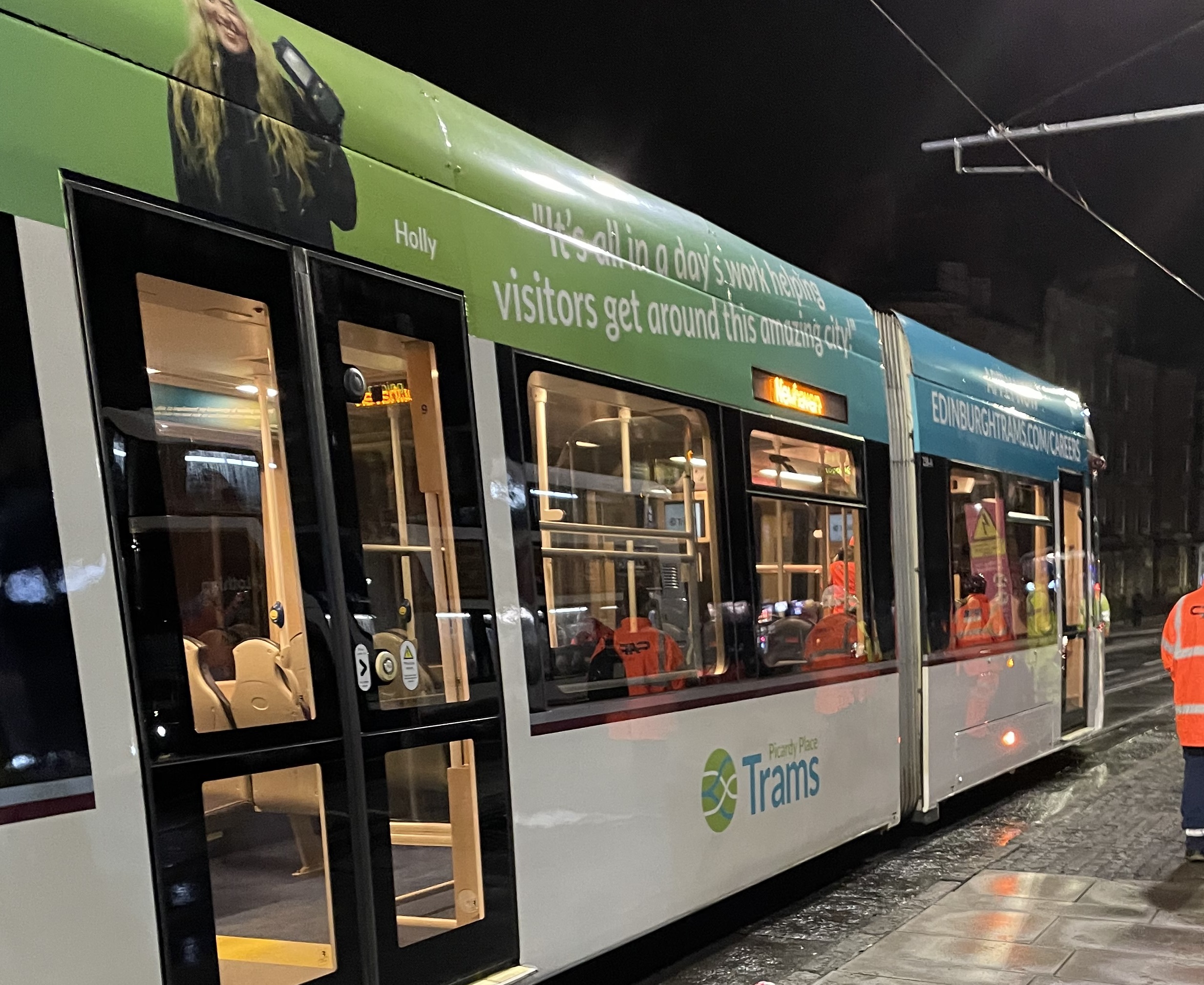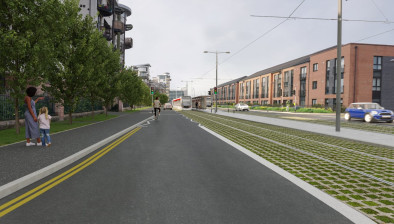First daytime testing for Trams to Newhaven begins

A test tram on Leith Walk
Test trams will appear during the day on the route between the city centre and Newhaven for the first time today.
The milestone follows a month of successful overnight testing and commissioning, including initial walking speed trams, more recently reaching 20mph, and work to integrate signalling and interface with Edinburgh Trams’ control centre.
From today, Edinburgh Trams will begin running trams from morning into the afternoon, which will allow the 40 newly-recruited drivers, along with experienced colleagues, to become familiarised with the route. Up until now, drivers have been training on a state-of-the-art simulator, featuring the existing line and a simulated version of the new track to the north of the city.
Testing to ensure the newly constructed line, software and signals work effectively and safely will also continue and over the coming weeks test tram frequency is expected to increase to a full timetable, as the launch of passenger services approaches.
Councillor Scott Arthur, Transport and Environment convener, said: “Seeing trams running the length of Leith Walk and beyond during the day will give a real taste of the future of the route – this is an exciting moment. Of course, this is the first time that the new trams will be on the line in the daytime, so I would encourage everyone to take extra care when in the area.
“We’re on the cusp of passenger services beginning, with the project delivered on time and in budget, and this is the culmination of a great deal of hard work by all those involved, despite the challenges of the last few years.
“We can now look forward to a green, high-capacity transport link between the centre and north of the city, which will transform travel along the route, help boost the economy and open up development opportunities.”
Edinburgh Trams’ managing director Lea Harrison added: “Our innovative approach to driver training has delivered numerous benefits for our business but, ultimately, the focus has been on keeping everyone safe. This is why we put new recruits and existing tram drivers alike through rigorous training and ongoing professional development programmes to maintain the highest safety standards.”
The testing comes as the council outlines plans for its biggest spend on paths, pavements and road improvement projects in almost a decade.
The Roads and Infrastructure Investment – Capital Delivery Priorities for 2023/24 report, to be considered by Transport and Environment Committee on Thursday, allocates an additional £11m approved in February as part of the council’s budget-setting process. The extra investment brings the total roads and infrastructure capital budget to £21.781m.
A proposed £11m investment in roads will significantly increase the number of carriageway renewal schemes carried out over the next year, helping to slow deterioration and improve network condition.
These schemes have been prioritised to the areas based on agreed criteria and weighting. As part of this, an additional 5% is applied to roads on the cycle network, promoting renewal schemes most used by cyclists. Edinburgh is the only local authority in Scotland to include such a weighting.
This is alongside a recommended increased £3m budget for footpaths and pavements and a further £500k to resurface rural and residential footways that would otherwise be low priority. As well as resurfacing, improvements can include measures like dropped kerbs and widening footway widths where required.
Councillor Scott Arthur said: “We have listened to the concerns of residents regarding the state of our roads and footpaths. The latest injection in funding will allow us to significantly increase the number of improvement schemes to enhance the condition of our roads and pavements.
“As a living, breathing capital working within a tight budget, Edinburgh faces a challenge when it comes to maintaining the city’s infrastructure, but this investment should see the situation improve. We need to get the basics right, and this intensive programme of investment is essential for a safe, usable network.
“We are listening to the public, and will resurface whole streets rather than take a piecemeal approach. In addition to this, we are trialling a state-of-the-art ‘Pothole Killer’ machine which will help automate repairs. We won’t get footpaths and roads back to where we want them to be in one year, but this investment will help halt the decline. If this work is approved on Thursday, on Friday I shall start the work of making the case for more funding next year.”
Other areas for investment are street lighting and traffic signals, for which £1.120m is being proposed for upgrades, and the city’s 3,366 bridges and road structures – £0.845m has been set aside for their maintenance, in addition to the major North Bridge refurbishment project.
An allocated £80k would allow the installation of dropped kerb crossings on streets where improvement projects are not already being carried out while £500k would go towards Local Environment Projects, letting the delivery team respond to local issues identified throughout the city.

















